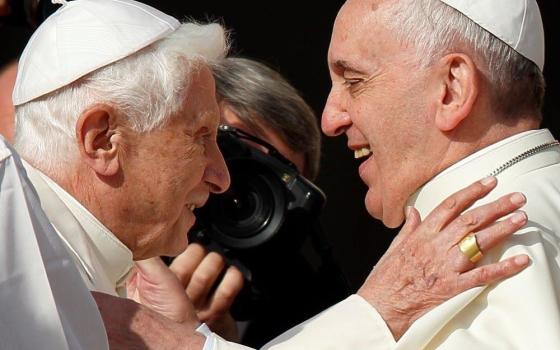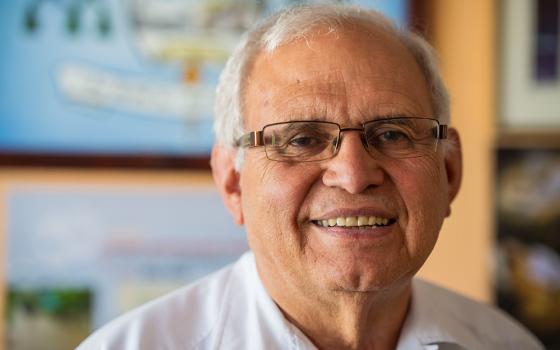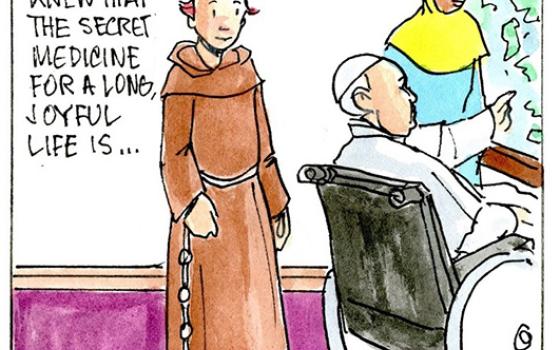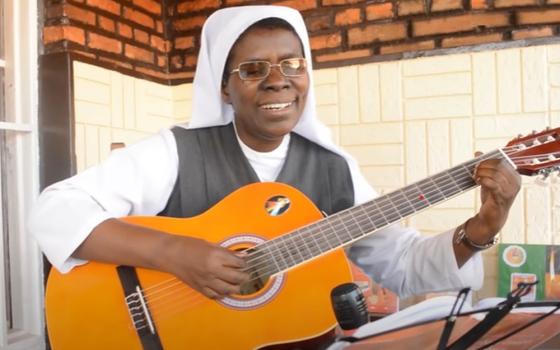
The Benedictine Sisters of Erie, Pa., have launched what they describe as a lay monastic movement for seekers of God and a meaningful life, calling it “our gift to the next generation.”
“Monasteries of the Heart: A New Movement for a New World” offers an opportunity for anyone -- regardless, or even in the absence, of faith tradition -- to live Benedictine spirituality and values with online communities or in face-to-face groups of family, friends, neighbors or fellow churchgoers, they said.
Members create their own “monastery” by supporting each other in shaping their spiritual lives around Benedictine values of community, prayer, meaningful work, peace and care of creation. They can gather around a table or in an online “monastery without walls” for prayer, discussion and reflection.
Monasteries of the Heart is not a vowed religious community, or canonical religious order, and there’s no intent to make it one, said coordinator Sr. Mary Lou Kownacki, although participants are invited to promise to live out such Benedictine values as a listening heart. It does, however, offer a new form of religious life, of living the Benedictine charism of community, prayer and work, she said.
The project, which coincides with the release of Erie Benedictine Sr. Joan Chittister’s new book, The Monastery of the Heart: An Invitation to a Meaningful Life (BlueBridge), was planned and organized by 23 in her community for the last year and a half. The movement and book are in response to a hunger for Benedictine spirituality, and requests to develop a new form “for a new face of society,” Kownacki said.
“There’s a great thirst for spirituality in the country and the world that doesn’t always [get fulfilled] in institutional religions,” Kownacki said. “We do believe Benedictine values have something to contribute to the seekers. This is one attempt to meet those spiritual needs.”
The Monasteries of the Heart Web site, monasteriesoftheheart.org, includes an online discussion of Chittister’s book, video interviews and a blog by staff. A feature for forming online communities is in the works.
Benedictines throughout the world commit themselves to a way of life enunciated 15 centuries ago in the Rule of St. Benedict, a guide for monastic living in community. The spirituality that has emanated from the rule provides an ancient template for living an ordinary life extraordinarily well, according to drafters of the lay movement.
A taste of what’s involved in creating a “monastery of the heart” will be offered by Chittister in a one-month online retreat (May 9 to June 3) that will address the key elements of Benedictine spirituality, and include excerpts from her new book, audio lessons, live teleconferences, simple practices, and opportunities for online sharing of how to incorporate Benedictine spirituality in one’s own life.
The online retreat is one of 65 such programs facilitated over the last five years by Spirituality & Practice, a multifaith and interspiritual Web site of resources for spiritual journeys (spiritualityandpractice.com). “It’s most interesting to me how deep people go with the material,” cofounder and director Mary Ann Brussat said. Through online practice circles, people feel supported in a community of kindred spirits from around the world, she said. Classes and retreats like Chittister’s appeal not only to Catholics, but Protestants, Jews, Sufis, and the growing demographic that describes itself as spiritual but not religious.
Brussat said people are looking for intimate communities to share their spiritual life that they can’t always find inside their church walls. And age, disability and physical remoteness may make it impossible.
“Online communities with the right guidelines can be just as valid as getting together in someone’s living room,” she said.
Christine Valters Paintner, a Seattle author and Benedictine Oblate who runs a virtual monastery, Abbey of the Arts, tapped into that hunger for spirituality when her first two online classes on contemplative practice and creative expression filled up immediately. She said people don’t have to live in a monastery to live a contemplative path.
Leah Rampy, executive director of the ecumenical Shalem Institute for Spiritual Formation, said there’s a need for organizations to help people connect spiritually, and “technology is inviting us in ways we never imagined possible.”
While face-to-face interactions may offer deep satisfaction, “if we stick with that, we’ll leave out a group of people for whom that’s not possible,” she said. “It will be wonderful to see how [the online monastery] evolves, and great to learn from.”
Liz Ellmann, executive director of Spiritual Directors International, agreed, saying it’s “high-transition time for spirituality, from brick-and-mortar to another way of knowing each other.”
Jesuit and Ignatian scholar Fr. Paul Coutinho said not only Christians, but people of all faith traditions are hungry for a spirituality that will help them find meaning in their lives.
“Most of those who give up their religion today state that they have a very strong faith but their spiritual needs are not being met,” he said. “The emphasis on religion today seems to be more on doctrine and rigid rituals rather than on experience and a deeper relationship with God.”
[Cheryl Wittenauer is an NCR contributor who lives in St. Louis.]
Editor's note: For more coverage from Cheryl Wittenauer on Benedictine Sisters, see her story on a gathering of over 100 younger sisters who met earlier this year: 'Young' Benedictines meet for historic gathering.




